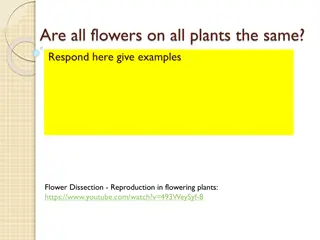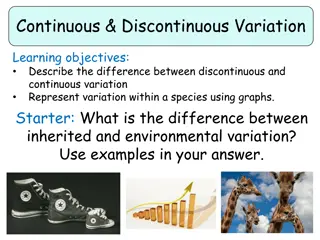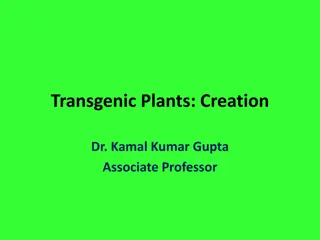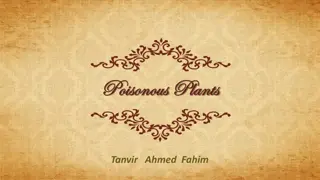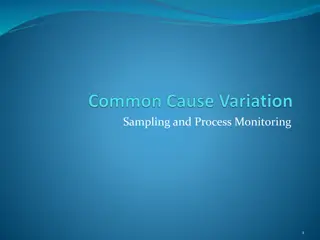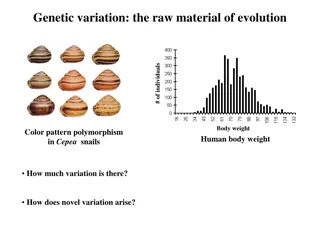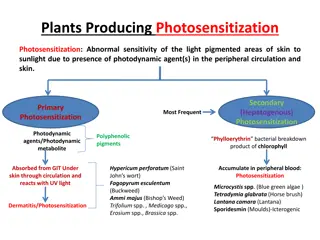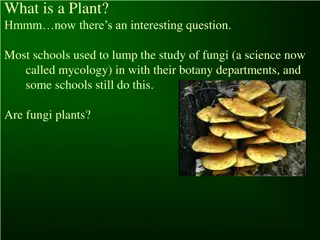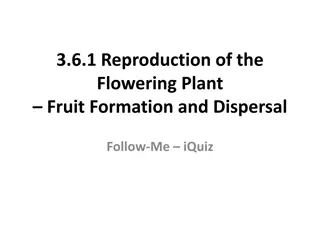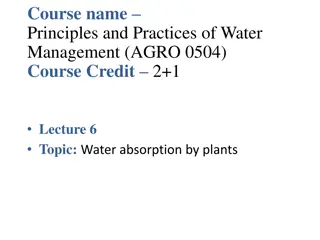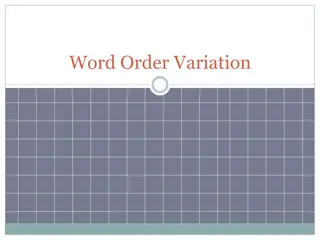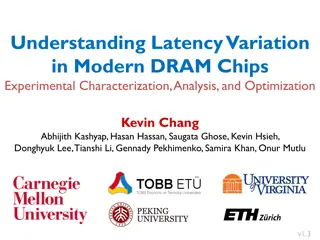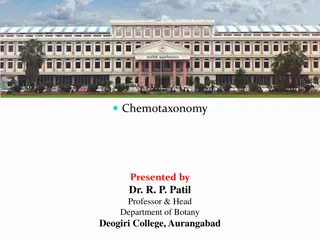Understanding Somaclonal Variation in Plants
Somaclonal variation refers to genetic variations in plants produced through tissue culture, leading to changes in chromosome structure, growth rate, and fertility. This variation can be caused by physiological, biochemical, and genetic factors, and is detectable through morphological and cytological studies. Somaclonal variation offers unique advantages and disadvantages in plant breeding and agricultural practices.
Download Presentation

Please find below an Image/Link to download the presentation.
The content on the website is provided AS IS for your information and personal use only. It may not be sold, licensed, or shared on other websites without obtaining consent from the author. Download presentation by click this link. If you encounter any issues during the download, it is possible that the publisher has removed the file from their server.
E N D
Presentation Transcript
CONTENTS:-- INTRODUCTION FEATURES CAUSES DETECTION / ISOLATION MECHANISM ADVANTAGES DISADVANTAGES APPLICATION
INTRODUCTION:-- SOMACLONAL :-- The term soma means the somatic cells and clones means the generation. The term somaclonal variation was first coined by LARKIN in 1981. Somaclonal variation is the variation seen in plants. According to the LARKIN genetic variations in plants that have been produced by plant tissue culture and can be detected as genetic traits. Plant derived from such cells or progeny of such plant is called somaclones.
FEATURES :-- Variation in number and structure of chromosomes are commonly observed. Regenerated plants with altered chromosomal changes often show changes in leaf shape and color ,growth rate and sexual fertility. Generally heritable mutation and persist in plant population even after plantation into the field.
CAUSES OF SOMACLONAL VARIATION:- Affected in 3steps :- 1. physiological cause 2. biochemical cause 3. genetic cause
1.PHYSIOLOGICAL CAUSE :-- Exposure of culture to plant growth regulators. Culture condition and which type of culture used.
2.Bio chemical cause :-- Lack of photosynthetic Due to alteration in carbon metabolism. Nitrogen metabolism. Antibiotic resistance.
GENETIC CAUSE :-- 1. Change in chromosome number :- 2. Changes in chromosome structure:- 3.Gene mutation 4.Plasmagene mutation:- 5.Transposable element activation :- 6.DNA sequence :- i. Change in DNA ii. Change in protein
DETECTION / ISOLATION OF SOMACLONAL VARIENTS :- 1.ANALYSIS OF MORPHOLOGICAL CHARACTERS:- i. Qualitative characters :- plant height , maturity date ,flowering date and leaf size. ii. Quantitative characters :- yield of flower , seeds and wax contents in different plant parts.
2. VARIANT DETECTION BY CYTOLOGICAL STUDIES :- Staining of meristematic tissue like root tip , leaf tip with feulgen and acetocarmine provide the number and morphology of chromosomes.
3. VARIENT DETECTION BY DNA CONTENTS :- Cytophotometer detection of fulgent stained nuclei can be used to measure the DNA contents.
4.DETECTION BY GEL ELECTROPHORESIS :- Change in concentration of enzymes , proteins and chemical products like pigments , alkaloids and amino acids can be detected.
5.DETECTION OF DISEASE RESISTANCE VARIENT :- Pathogen or toxin responsible for disease resistance can be used as selection agent during culture.
6. DETECTION OF HERBICITE RESISTANCE VARIENT :- Plantlets generated by the addition of herbicide to the cell culture system can be used as herbicide resistance plant.
7.DETECTION OF ENVIRONMENTAL STRESS TOLERANT VARIENT :- Selection of high salt tolerant cell lines in tobacco. Selection of temperature stress tolerant in cell lines in pear. Selection of mineral toxicities tolerant in sorghum plant.(aluminum toxicity)
MECHANISM :-- 1. GENETICS (heritable variation) :- pre existing variations in the somatic cell of explant. Caused by mutation and other DNA change. Occur at high frequency. 2.EPIGENETICS (Non-heritable variation) :- Variation generated during tissue culture. Caused by temporary phenotypic changes. Occur at low frequency.
ADVANTAGES :-- Helps in crop improvement. Creation of additional genetic variation. Increased and improvement production of secondary metabolites. selection of plants resistant to various toxin , herbicides , high salt concentration and mineral toxicity. Suitable for breeding of tree species.
DISADVANTAGES :-- Applicable only to those species cell culture which regenerate into complete plants. Show reduced or no regeneration potential. Show undesirable features such as reduced fertility growth rate , and overall performance of plant. Selected variants are random and genetically unstable.
APPLICATION :-- Resistance to diseases. Resistance to abiotic stresses :- freezing tolerance(wheat) , salt tolerance(tobacco) , aluminum tolerance(carrot). Resistance to herbicides. Improved seed quality :- A new variety seeds found.


